How to Find Your Unique Hair Type—and Get Your Best Hair Ever
Want softer, bouncier, healthier strands? It’s a numbers game: Use this handy guide to find your unique type and texture—and get ready for your best hair ever.

Photo: NeonShot/iStock
What never goes out of style? Embracing the hair you were born with—whether you’re well acquainted with what naturally grows from your scalp or (after years of chemical straighteners, blow-outs, or perms) barely remember what your untouched strands look like. So we’re turning back to the game-changing identification system of Oprah’s former longtime hairstylist, Andre Walker. He created it more than 20 years ago for his book, Andre Talks Hair!—and the idea continues to be followed and built upon.
First, find the number that corresponds to your hair type: straight (1), wavy (2), curly (3), or coiled (4). Then zero in on the letter (A, B, or C) that identifies your texture (fine, medium, or coarse) or curl pattern to help you devise a personalized care and styling regimen. And in case you’re wondering, Oprah is a 4B.
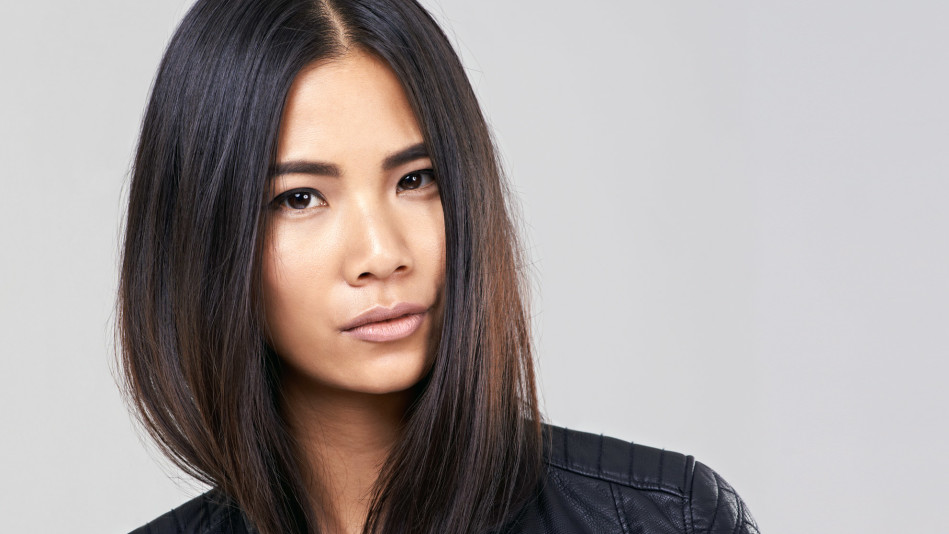
Photo: PeopleImages/iStock
1. Straight
A: Fine and can get oily
B: Medium with some volume
C: Coarse and hard to hold a curl
Cut
Because straight hair has a smooth, flat surface, split ends can be obvious, says celebrity stylist Jenny Cho. Stick to the standard snip schedule: every six to eight weeks. To create fullness for all 1s, Walker recommends solid hairstyles cut straight across, like a bob. The exception: A lightly layered lob will encourage movement but still keep length, says Cho—good for type 1As.
Care
Healthy straight hair can be strong, but also tends to go limp, says Walker. A volumizing shampoo and conditioner may help bring out bounce and body, particularly for As and Bs. If you have fine hair, put conditioner on the midlengths to ends, not your scalp. Bs and Cs should add a leave-in conditioner for “extra nourishment without heaviness,” says Cho.
Styling
Rough-drying (using just your hands and the blow-dryer) helps add volume. Cho suggests picking your styling product based on what you’re going for: a light oil on damp hair for shine, thickening balm for fullness, mousse for bounce, or dry shampoo at the roots of clean fine-to-medium hair to prevent oiliness.
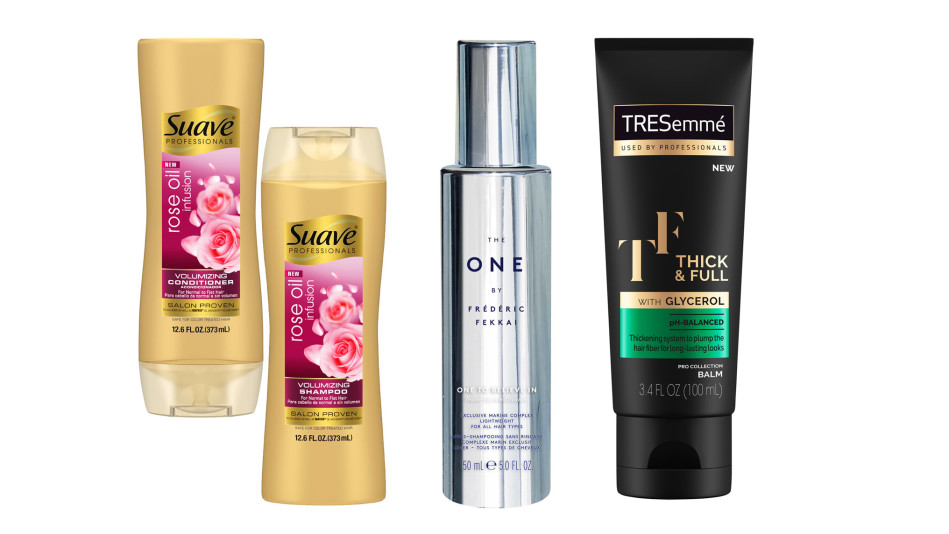
Photo: Courtesy of Companies
Products
Suave Professionals Rose Oil Infusion Volumizing Shampoo and Conditioner ($3)
The One by Frédéric Fekkai One to Believe In Leave-In Conditioner ($26; Ulta.com)
Tresemmé Thick & Full Balm ($5; drugstores)

Photo: Steve Debenport/iStock
2. Wavy
A: Fine with an S shape
B: Medium S shape and prone to frizz
C: Coarse S shape and tends to frizz
Cut
Ride those waves—your hair is right in the middle of the texture spectrum; whatever length you choose, soft layering is the way to go, says Dickey of Hair Rules Salon in New York City. For stylish versatility, Cho suggests a trendy shag cut, a look with face-framing layers and choppiness throughout.
Care
Your hair tends to be on the drier side, so infuse it with moisture, starting with a gentle, hydrating shampoo and conditioner. Finer hair needs to be washed more often than thicker strands—about twice a week, says Shai Amiel of Capella Salon in Studio City, California. If you have medium hair, you can shampoo every five days; with coarse, you can stretch it to a week.
Styling
Type As love lightweight products—think mousses or gels—since the fight against flatness is real. Apply stylers to towel-dried hair, staying away from roots so hair doesn’t get weighed down. For B and C waves, add a cream (just on ends for Bs) to reduce fly-aways and add control, Dickey says.
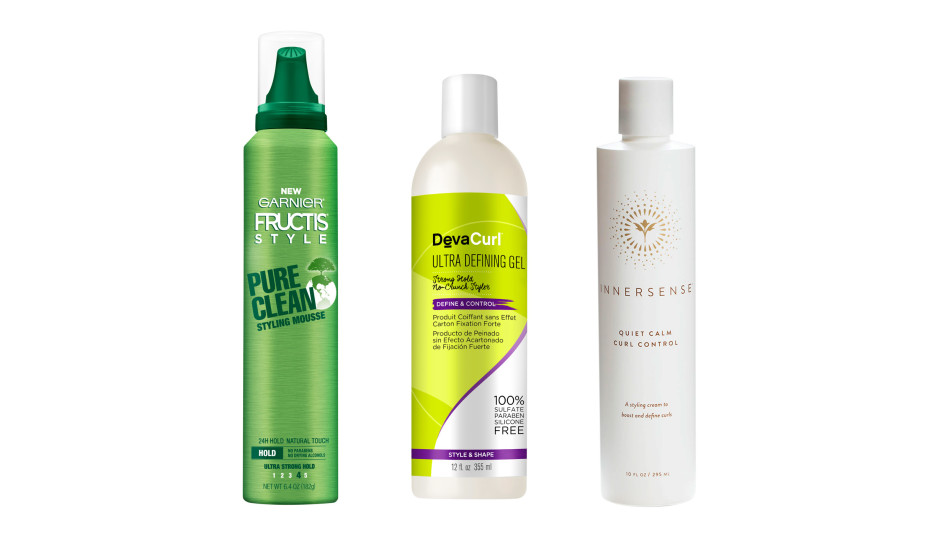
Photo: Courtesy of Companies
Products
Garnier Fructis Pure Clean Styling Mousse ($3.50; Target.com)
DevaCurl Ultra Defining Gel ($22; DevaCurl.com)
Innersense Organic Beauty Quiet Calm Curl Control ($24; InnerSenseBeauty.com)

Photo: iprogressman/iStock
3. Curly
A: Loose ringlets
B: Tight curls
C: Corkscrews
Cut
Walker recommends layers to keep those ringlets bouncy and create fullness and flow. Know that layering your hair to wear it curly is a commitment—it could look choppy if you decide to straighten it later. If you change up your texture often, be sure to let your stylist know, so your cut can look great blown out or natural.
Care
Kick off your routine with a nonsudsing shampoo. If you’re an A, you may be able to skip conditioner altogether, says Dickey. A popular option for Bs and Cs between weekly shampoos: co-washing (applying conditioner instead of shampoo to wet hair and rinsing it out). But don’t bypass your scheduled cleansing, says Walker: “You have to remove build-up for hair to get nutrients.”
Styling
Hydration and frizz control are key concerns. The solution is simple: water, water, water, says Amiel. Styling starts in the shower. “When hair is wet, product is absorbed well and curls can set with more definition,” says Dickey. Loosely curled As can benefit from combining products, like a mousse for volume and a cream or serum for frizz control. Bs and Cs can go for heavier creams or jellies.
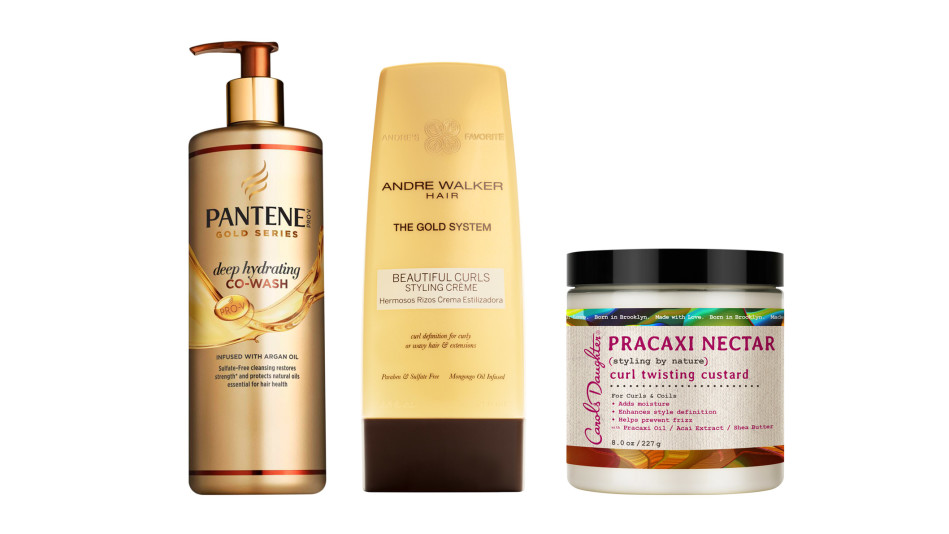
Photo: Courtesy of Companies
Products
Pantene Gold Series Deep Hydrating Co-Wash ($10; drugstores)
Andre Walker Hair Beautiful Curls Styling Crème ($16; AndreWalkerHair.com)
Carol’s Daughter Pracaxi Nectar Curl Twisting Custard ($14; CarolsDaughter.com)

Photo: m-imagephotography/iStock
4. Coiled
A: Tight springs
B: Z-shape
C: Very tight coils or Z-shape
Cut
Coiled hair is best cut dry. Both Dickey and Walker prefer to blow hair straight before snipping so split ends are more apparent. Another technique: Amiel asks clients to come to his salon with clean, dry hair so he can see the shape and give each coil its own cut—literally. Generally, tightly coiled hair doesn’t need to be trimmed very often—about every three months—if it’s not being damaged by heat styling.
Care
Try a weekly strengthening treatment. Apply coconut oil to dry hair, wait 30 minutes, then shampoo, says Amiel. Wash weekly with a nonsudsing formula and deep condition with a mask. Dickey suggests co-washing (conditioning and rinsing) between shampoos to reset curls—Cs can even do so daily. Why? When you rehydrate, you’ll see the curl pattern better. A leave-in conditioner also helps.
Styling
Products should be applied to sopping-wet hair. Start by using curling cream on the fastest-drying section, says Amiel. To help clump tight coils together, Dickey suggests a palm-rolling technique: “Massage cream into your palms and rub it into hair,” he says. For definition or to unify your coil pattern, wrap small sections around a straw, says Amiel. While it’s in place, air-dry or diffuse.
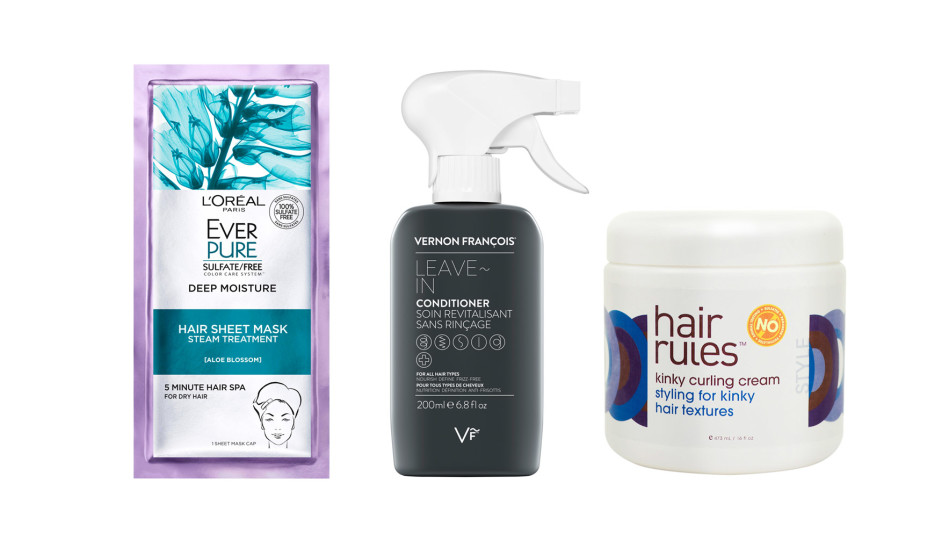
Photo: Courtesy of Companies
Products
L’Oréal Paris EverPure Deep Moisture Hair Sheet Mask ($4.50; LOrealParisUSA.com)
Vernon François Leave-In Conditioner ($28; Sephora.com)
Hair Rules Kinky Curling Cream ($32; HairRules.com)
First, find the number that corresponds to your hair type: straight (1), wavy (2), curly (3), or coiled (4). Then zero in on the letter (A, B, or C) that identifies your texture (fine, medium, or coarse) or curl pattern to help you devise a personalized care and styling regimen. And in case you’re wondering, Oprah is a 4B.

Photo: PeopleImages/iStock
1. Straight
A: Fine and can get oily
B: Medium with some volume
C: Coarse and hard to hold a curl
Cut
Because straight hair has a smooth, flat surface, split ends can be obvious, says celebrity stylist Jenny Cho. Stick to the standard snip schedule: every six to eight weeks. To create fullness for all 1s, Walker recommends solid hairstyles cut straight across, like a bob. The exception: A lightly layered lob will encourage movement but still keep length, says Cho—good for type 1As.
Care
Healthy straight hair can be strong, but also tends to go limp, says Walker. A volumizing shampoo and conditioner may help bring out bounce and body, particularly for As and Bs. If you have fine hair, put conditioner on the midlengths to ends, not your scalp. Bs and Cs should add a leave-in conditioner for “extra nourishment without heaviness,” says Cho.
Styling
Rough-drying (using just your hands and the blow-dryer) helps add volume. Cho suggests picking your styling product based on what you’re going for: a light oil on damp hair for shine, thickening balm for fullness, mousse for bounce, or dry shampoo at the roots of clean fine-to-medium hair to prevent oiliness.

Photo: Courtesy of Companies
Products

Photo: Steve Debenport/iStock
2. Wavy
A: Fine with an S shape
B: Medium S shape and prone to frizz
C: Coarse S shape and tends to frizz
Cut
Ride those waves—your hair is right in the middle of the texture spectrum; whatever length you choose, soft layering is the way to go, says Dickey of Hair Rules Salon in New York City. For stylish versatility, Cho suggests a trendy shag cut, a look with face-framing layers and choppiness throughout.
Care
Your hair tends to be on the drier side, so infuse it with moisture, starting with a gentle, hydrating shampoo and conditioner. Finer hair needs to be washed more often than thicker strands—about twice a week, says Shai Amiel of Capella Salon in Studio City, California. If you have medium hair, you can shampoo every five days; with coarse, you can stretch it to a week.
Styling
Type As love lightweight products—think mousses or gels—since the fight against flatness is real. Apply stylers to towel-dried hair, staying away from roots so hair doesn’t get weighed down. For B and C waves, add a cream (just on ends for Bs) to reduce fly-aways and add control, Dickey says.

Photo: Courtesy of Companies
Products

Photo: iprogressman/iStock
3. Curly
A: Loose ringlets
B: Tight curls
C: Corkscrews
Cut
Walker recommends layers to keep those ringlets bouncy and create fullness and flow. Know that layering your hair to wear it curly is a commitment—it could look choppy if you decide to straighten it later. If you change up your texture often, be sure to let your stylist know, so your cut can look great blown out or natural.
Care
Kick off your routine with a nonsudsing shampoo. If you’re an A, you may be able to skip conditioner altogether, says Dickey. A popular option for Bs and Cs between weekly shampoos: co-washing (applying conditioner instead of shampoo to wet hair and rinsing it out). But don’t bypass your scheduled cleansing, says Walker: “You have to remove build-up for hair to get nutrients.”
Styling
Hydration and frizz control are key concerns. The solution is simple: water, water, water, says Amiel. Styling starts in the shower. “When hair is wet, product is absorbed well and curls can set with more definition,” says Dickey. Loosely curled As can benefit from combining products, like a mousse for volume and a cream or serum for frizz control. Bs and Cs can go for heavier creams or jellies.

Photo: Courtesy of Companies
Products

Photo: m-imagephotography/iStock
4. Coiled
A: Tight springs
B: Z-shape
C: Very tight coils or Z-shape
Cut
Coiled hair is best cut dry. Both Dickey and Walker prefer to blow hair straight before snipping so split ends are more apparent. Another technique: Amiel asks clients to come to his salon with clean, dry hair so he can see the shape and give each coil its own cut—literally. Generally, tightly coiled hair doesn’t need to be trimmed very often—about every three months—if it’s not being damaged by heat styling.
Care
Try a weekly strengthening treatment. Apply coconut oil to dry hair, wait 30 minutes, then shampoo, says Amiel. Wash weekly with a nonsudsing formula and deep condition with a mask. Dickey suggests co-washing (conditioning and rinsing) between shampoos to reset curls—Cs can even do so daily. Why? When you rehydrate, you’ll see the curl pattern better. A leave-in conditioner also helps.
Styling
Products should be applied to sopping-wet hair. Start by using curling cream on the fastest-drying section, says Amiel. To help clump tight coils together, Dickey suggests a palm-rolling technique: “Massage cream into your palms and rub it into hair,” he says. For definition or to unify your coil pattern, wrap small sections around a straw, says Amiel. While it’s in place, air-dry or diffuse.

Photo: Courtesy of Companies
Products



